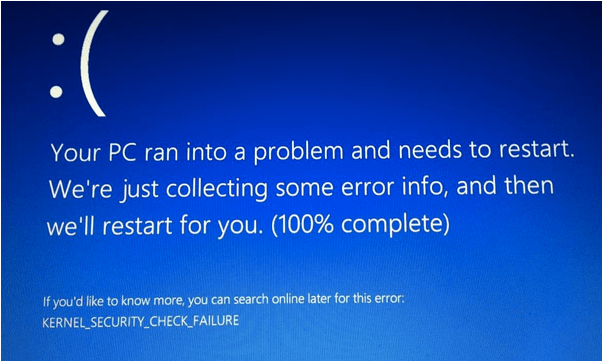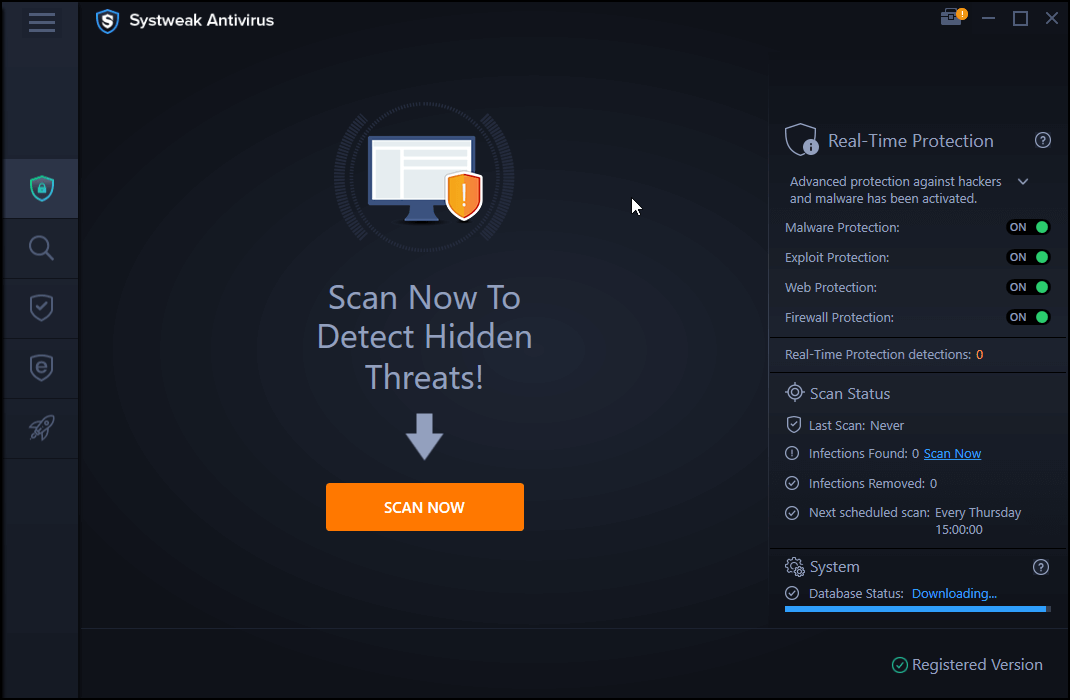The “BSOD Kernel security check failure” issue is quite common on Windows 10. Whenever you upgrade your Windows to the latest or newer version, the existing drivers become outdated causing this issue. Another possible set of causes can also be corrupted system files, the presence of viruses or malware on your device, incompatible RAM, and more.

In this post, we have compiled a list of few solutions that will allow you to fix BSOD Kernel Security check failure on Windows 10 devices.
Let’s get started.
Also read: How to Get Rid of BSOD Critical Structure Corruption in Windows 10 PC
How to Fix BSOD Kernel Security Check Failure on Windows 10
Solution #1: Run System File Checker
System File Checker is an in-built Windows utility tool that scans your device to fix corrupt system drivers and restores any corruptions if found on your machine.
To run System File Checker, you will be needing to launch the Command Prompt shell.
Open Command Prompt, right-click on it, and select “Run as administrator”.
In the Command Prompt window, type “sfc/scannow” command and hit Enter.

Wait for a while until a complete scan is performed on your device to look for integrity issues. Windows will list down the scan results and fix any system discrepancies if found on your device.
Solution #2: Use Windows Memory Diagnostic Tool
You can use the Memory Diagnostic tool to check your RAM and other memory-related problems on Windows 10. To run the Windows Memory Diagnostic tool, follow these steps:
Launch the Start menu search bar and type “Windows Memory Diagnostic” in the search box, hit Enter.

Select “Windows Memory Diagnostic”.

Tap on the “Restart now and check for problems” option to scan your device for memory problems.
After running the Windows Memory Diagnostic tool, reboot your device to check whether the BSOD Kernel Security Check Failure issue still persists.
Solution #3: Enable Legacy Advanced Boot Menu
Open Windows settings, select “Update and Security”.

Switch to the “Recovery” option from the left menu pane. Under the “Advanced Startup” section, tap the “Restart now” button. Your device will now reboot, and you will be able to view the Advanced Startup options on the screen.

Tap on “Troubleshoot”.
 Select “Advanced Options”.
Select “Advanced Options”.

Tap on “Command Prompt”.

In the Command Prompt window, type C: and hit Enter.
In the next line, type the following command:

BCDEDIT /SET {DEFAULT} BOOTMENUPOLICY LEGACY
This will enable the Advanced Boot Menu on your Windows 10 device.
Solution #4: Scan your PC for Viruses and Malware
If your device is infected with viruses and malware then you may encounter the BSOD Kernel Security Check Failure issue on your Windows 10 PC.
To fix this, you can install a comprehensive antivirus suite on your Windows device that keeps all sorts of malicious threats at bay. Looking for a recommendation. We have something useful in mind!

Download Systweak Antivirus for PC that offers real-time protection against viruses, malware, spyware, Trojans, and other malicious threats. By installing the Systweak Antivirus tool, you can safeguard your device and data from zero-day vulnerabilities s and other potential threats. Apart from offering complete virus protection, Systweak Antivirus also improves your device’s performance by removing malicious or corrupt startup items that may degrade your machine speed and performance.
Solution #5: Run CHKDSK Command
The CHKDSK command on Windows is a powerful tool that helps you remove hard driver errors on Windows 10. To use the CHKDSK command, follow these steps.
Launch Command Prompt, right-click on it, and select “Run as Administrator”.
In the Command Prompt window, type CHKDSK followed by the driver letter initial and /f, hit Enter.

Example: CHKDSK C: /f
Wait for a while until the tool runs a complete scan on your device to hunt hard disk issues and errors.
Close the Command Prompt window, reboot your device to check whether you’re still facing the BSOD Kernel Security Check Failure issue on your PC.
Solution #6: Update Drivers
Outdated system drivers are one of the most common reasons why you may encounter the Kernel security check failure. To update device drivers, follow these steps:
Press Windows + R key combination to open the Run dialog box.
Type “Devmgmt.msc” in the textbox and hit Enter.

In the Device Manager window, find the “Disk Drives” option. Tap on it to expand options.

Right-click on each option, select the “Update Driver” option.
Follow the on-screen instructions and update all hardware disk drivers to their latest version.
Also read: Step-By-Step Guide To Fix Windows Stop Code Memory Management BSOD Error
Conclusion
Here were a few troubleshooting solutions that will allow you to fix the BSOD Kernel Security Check Failure issue on Windows 10. You can encounter this issue at any instance, while running a certain app or service, after upgrading your Windows OS to a newer version, when memory-related problems persisted on your device, or due to any possible reason.
Hence, you can use any of the above-mentioned solutions to fix this issue and get past the Blue Screen of Death (BSOD) to resume using Windows normally.



 Subscribe Now & Never Miss The Latest Tech Updates!
Subscribe Now & Never Miss The Latest Tech Updates!
Chetan
Blue Death screen on your PC is nothing less than a nightmare you get everyday.. thank you team for making me check one more way